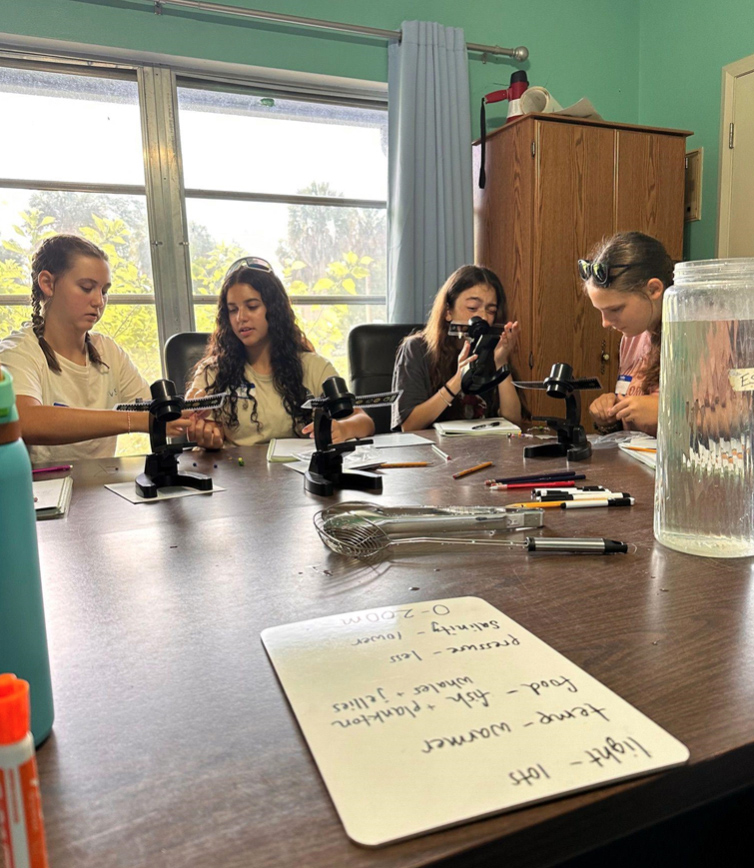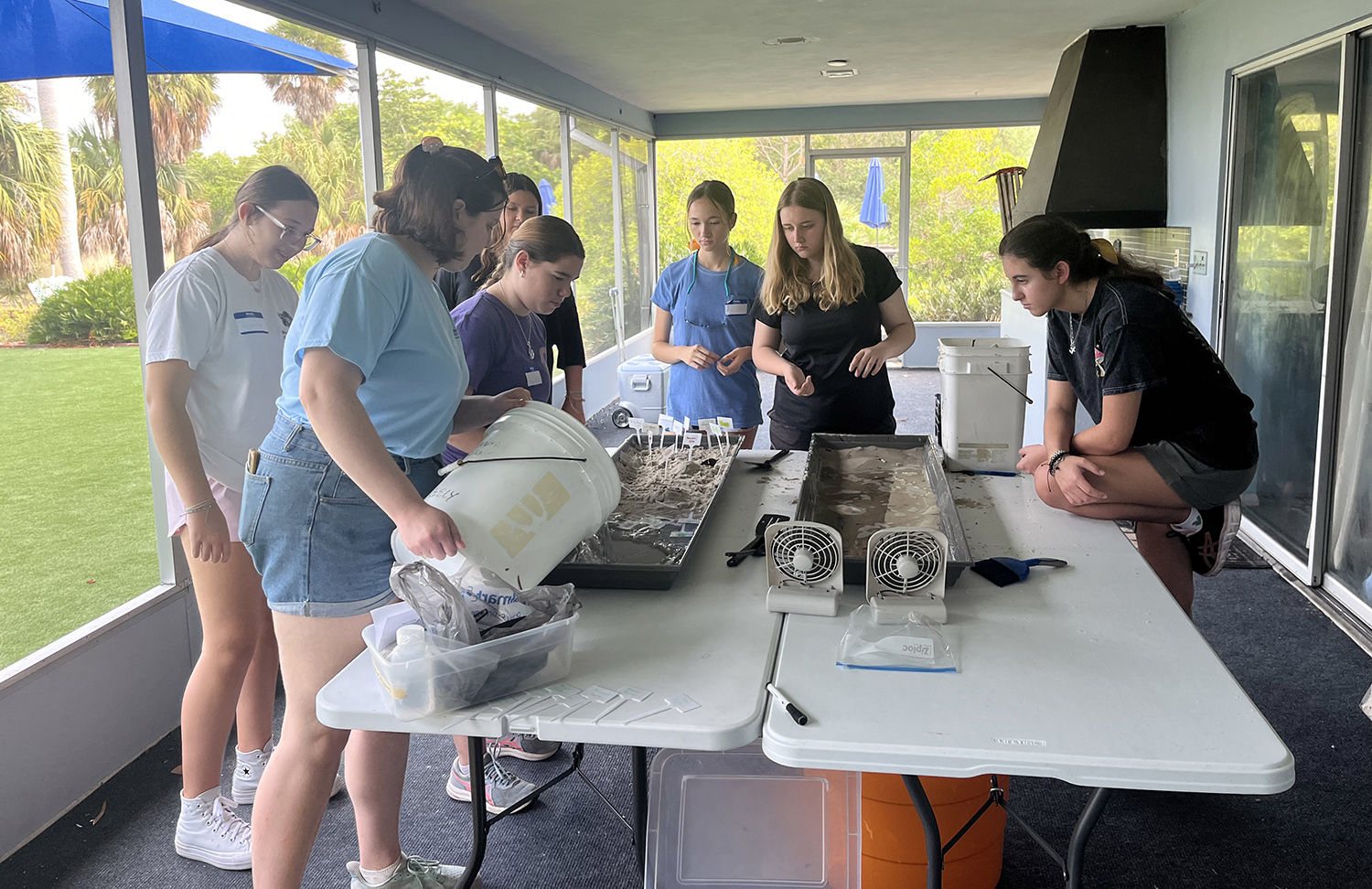Week 1 – Ocean Concept Rotations, June 11
Savannah Ford-Myers, Peer
Ocean concept rotations allow the OCG campers to learn about the different layers of the oceans. At the beach station campers had the chance to build their own beach. This started by having the girls build what they think a beach would look like using sand, water, and organisms. After testing how their beaches held up against a storm, campers learned about what structures create beaches. Learning about the important elements of beaches like dunes, berms, beach faces, ridges, and even ripples caused by waves allowed the campers to understand what their beach needed to hold up against a storm. After learning how the wind and waves create a strong beach, the campers were able to rebuild their beaches. These beaches typically held up much better against the storm. Campers were also able to learn about man-made beaches and natural beaches that surround us here in Florida. Learning about beaches is very important as the girls continue exploring the other layers of the ocean. The conditions on the beach provide basic information for the campers to continue observing how they change as they get deeper.

Eli Gilchrist, Peer
Ocean concept rotations allow the OCG campers to learn about the different layers of the oceans.
I was teaching about the epipelagic zone of the of the ocean. We discussed the characteristics of the epipelagic zone, such as the levels of light, salinity, and temperature at that level of the ocean along with the typical animals that inhabit this zone of the ocean. Our main topic of discussion however, was the two main types of plankton that can be found in the epipelagic zone: zooplankton and phytoplankton. We discussed and reviewed their differences and similarities, where they fit in the food web, what they look like, how they survive, and what they contribute to the ocean and their ocean zone. Then we would have the campers build their own plankton model, encouraging them to take inspiration from the real-life images of plankton available for the structure, to see who’s would sink the slowest. This was an experiment meant to imitate the way that plankton manages to float in the water close enough to the surface to absorb sunlight, while still not being so close they burn. I thoroughly enjoyed getting to watch the girls experiment, process, and retry attempts while making their plankton, encouraging them that the scientific method was all about failing, making slight modifications, and then trying again.
It was very fun to watch how each group thought differently, processed the information in their own way, and the creativity they used when developing their plankton. I also had a great time teaching about the zone as the day went on and my science mentor began to give me more responsibility. I believe the campers learned a lot about the epipelagic zone and the characteristics of plankton and their overall importance to the health and wellbeing of the ocean. The campers also learned general interesting facts and new knowledge about the marine animals that inhabit the ocean, such as the traits of countershading and swimming in schools. The coolest thing I saw while getting to be in this room was definitely the creative minds of the girls working together to work through challenges in order to make their best plankton. It was truly enriching to get to see their creativity shine through, watch them adjust their creations to sink slower, and to get to simply watch as they thought and processed the science.
